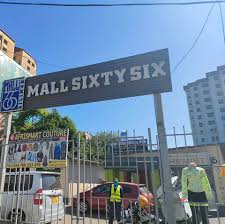The Resurgence of Malls Post-Pandemic: Trends and Changes

Introduction
The mall has long been a staple of modern retail culture, serving as a social hub and shopping destination. In recent years, however, malls have faced unprecedented challenges, especially during the COVID-19 pandemic, which has transformed shopping habits and consumer behaviour. As we emerge from the pandemic, it’s crucial to examine the resurgence of malls and how they are adapting to the evolving landscape.
Current Trends in Mall Revitalisation
According to industry reports, malls have started to bounce back, with foot traffic returning to pre-pandemic levels in many locations. Strategies for revitalisation include diversifying tenant mixes, enhancing customer experiences, and increasing the presence of entertainment options. Malls are now hosting events, offering co-working spaces, and integrating technology to attract consumers.
Changing Tenant Mix
One of the most noticeable changes in malls is the shift in tenants. While staple retailers remain important, there’s been a significant increase in non-retail experiences, such as gyms, restaurants, and personal service providers. In particular, food courts and dining areas are expanding, offering unique culinary experiences that draw consumers in.
Embracing Technology
Malls are also investing in technology to improve customer experiences. Innovations such as virtual reality experiences, mobile apps for navigation and services, and contactless payment systems are being implemented. These advancements cater to a tech-savvy consumer base, making shopping more convenient and interactive.
The Role of Community and Sustainability
Malls are increasingly focusing on their role within the community. Many are promoting sustainability initiatives, incorporating green spaces, and collaborating with local businesses for pop-up events or markets. These efforts not only enhance the shopping experience but also build a community-oriented atmosphere that encourages repeat visits.
Conclusion
The future of malls is both promising and challenging. Retailers, property managers, and local governments must continue to innovate to meet the needs of modern consumers. As malls evolve, they have the potential to thrive in a landscape that prioritises experience over mere shopping. By embracing technology, diversifying offerings, and fostering community engagement, malls can remain relevant. The current revitalisation trends indicate a shift in focus that could redefine the traditional shopping experience for years to come.








